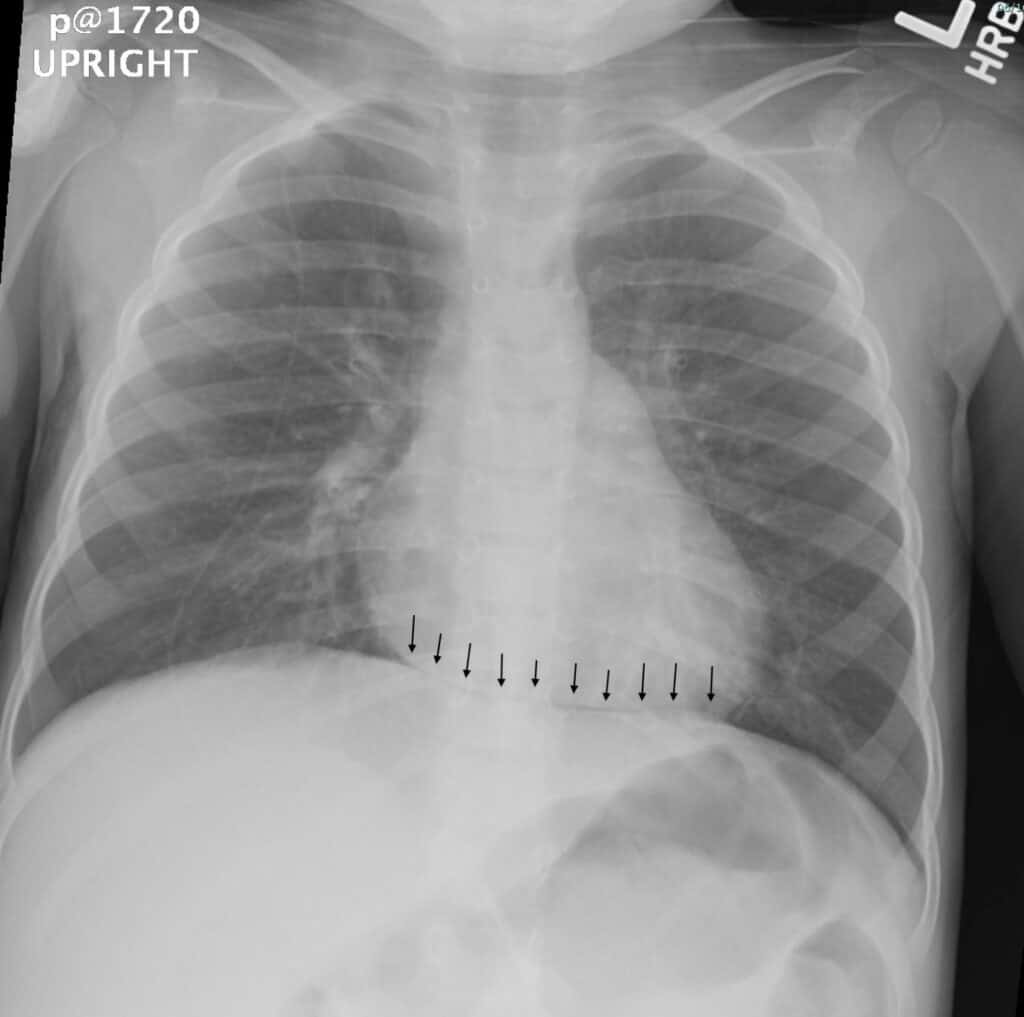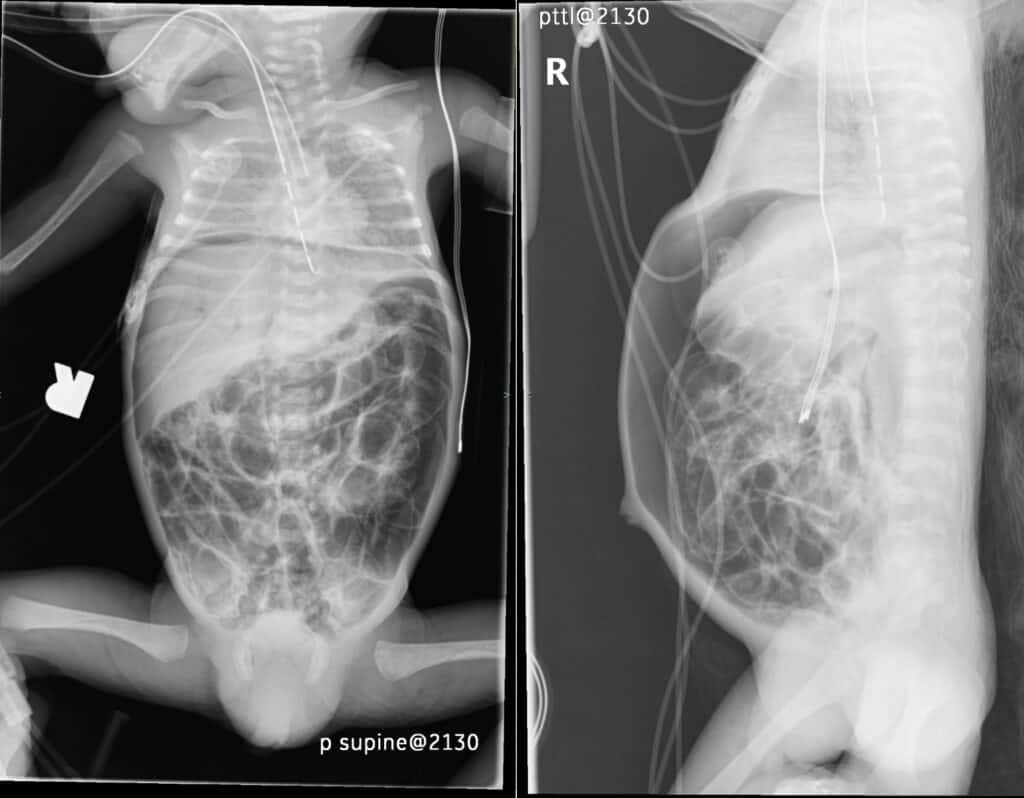Pneumothorax, Pneumomediastinum – Air Leaks In The ICU
Most newborns (commonly preterms) needing additional respiratory support are placed on mechanical ventilation in the intensive care unit, which increases the risk of air dissecting through the alveolar spaces into the pulmonary interstitium with eventual rupture of air into the pleural cavity (4, 6).Useful signs in the diagnosis of small pneumothoraces include the deep sulcus sign (sharp and lucent costophrenic angle on the supine radiograph), medial stripe sign (increased lucency at the interface of the mediastinum and medial lung in case of a medial pneumothorax) and a hyperlucent hemithorax (4).

Pneumomediastinum can also accompany pneumothorax as a complication of positive pressure ventilation and manifests as accumulation of air in the mediastinum pushing the normal thymus upward and laterally (5, 6) which results in the characteristic angel wing sign.


Selected References
- Bickle, I., & Shetty, A. (2020). Neonatal pneumothorax | Radiology Reference Article | Radiopaedia.org. Retrieved 13 September 2020, from https://radiopaedia.org/articles/neonatal-pneumothorax?lang=us
- Akin, K., Nevzat Cizmeci, M., Kenan Kanburoglu, M., Zulfikar Akelma, A., & Mansur Tatli, M. (2013). Angel Wing Sign in a Neonate with Pneumomediastinum. The Journal of Pediatrics, 163, 296. https://doi.org/10.1016/j.jpeds.2013.02.031de
- Lange, C. (2011). Radiology in paediatric non-traumatic thoracic emergencies. Insights into Imaging, 2(5), 585–598. https://doi.org/10.1007/s13244-011-0113-4
